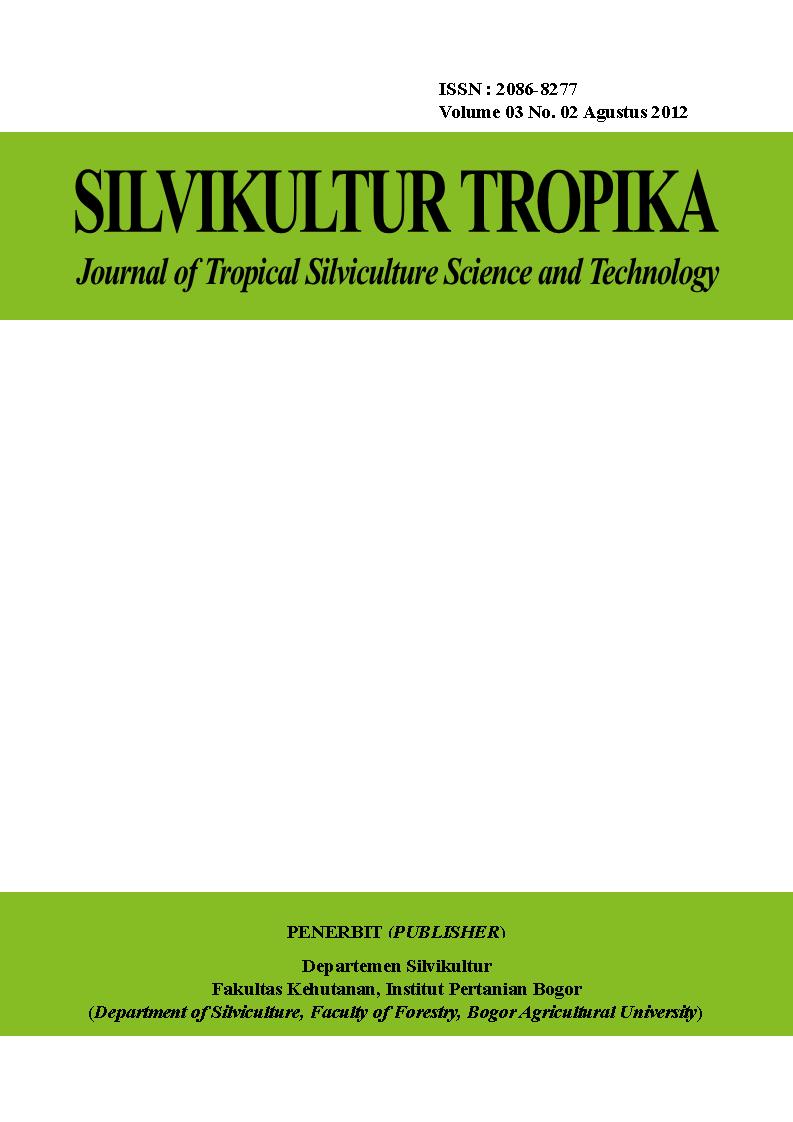Keragaman Genetik Populasi Sengon (Paraserianthes falcataria (L) Nielsen) pada Hutan Rakyat di Jawa Berdasarkan Penanda RAPD
Abstract
Sengon is commonly planted in public forest in Java because it included fast growing species (Santoso 1992). Sengon is multifunction such as for its’s leaf, stem, and root system. However, sengon planting with monoculture system causes it is easily attacked by pest and desease such as stem rot pest (Xystrocera festiva), dumping off, and karat puru. So that, it needs high quality sengon which is produced from improvement program. High genetic diversity is needed to reach improvement program. The aim of this research is to know genetic diversity in or between population of sengon on some public forest in Java. Sengon sample that was obtained from 9 populations in Java with amount 25 population sample. Sengon DNA is extracted with CTAB method and Kit GenElute SIGMA. Data analysis is done by POPGENE program and NTSYS. Observed parameter are expected heterozygote (He), polimorfic locus percentage (PLP), observed alel (na), effective alel (ne), and genetic distance. Expected heterozygote value of entire population is 0.2349. It shows that sengon population in Java has high genetic diversity. Generally, genetic variation is in population (82%) while the different between population is only 18%. Genetic distance dendrogram shows that sengon spread in Java is random, because population that is in one same region (West Java) has near distance wih other province.










